Recently, while I was working on my client’s projects I came across an article in an Indian newspaper. The article mentioned that Mumbai, India’s Maximum City, has been ranked among the top 20 expensive cities in the world. While London was ranked ahead of New York and Hong Kong, Mumbai, my birth city, was the only Indian city that made it to the list. The news further tells us that all the top cities are most expensive for businesses and workers to occupy. This means that the report only focuses on the real estate segment and does not take into consideration the average lifestyle and living conditions. Ironically, Mumbai is often voted as the most expensive city in India, but I can assure you that majority of the Mumbai population survives on less than Rs. 20000 per month (that’s US$300). To all those who grumble about the rising cost of the city, let me tell you this – Mumbai is all about finding options. The city is open to all from beggars to millionaires; therefore all you need to do is find what you want. If you are in the Maximum City on a limited budget for business purposes, or if you are visiting someone just for a day or two, here are some ways on how to survive in Mumbai at a minimum cost.
Travel in Local Trains, Skip Cabs
If you’re looking for how to survive in Mumbai tips local trains can help you. Mumbai is the only city in India with a massive railway network, so take advantage of it.
Local trains can take you from one corner of the city to another without burning a hole in your pocket.
For instance, a 60-kilometer (37.28 miles) train ride from Churchgate to Virar will cost you Rs. 20 (that’s only 31 USD cents). A cab ride for the same distance can cost you more than Rs. 1000 (that’s US$15.36).
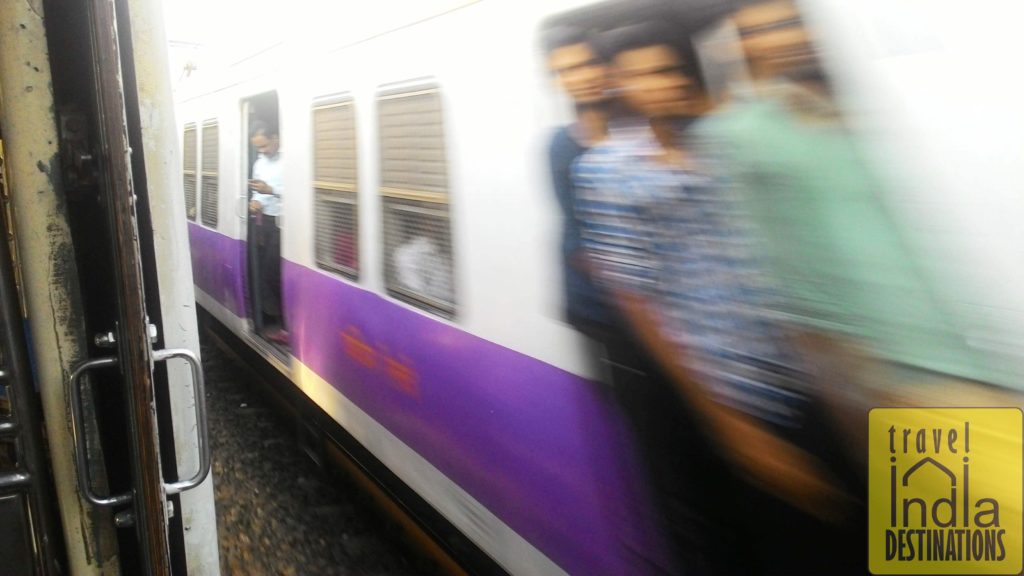
Nothing beats the local train in Mumbai
Apart from the cost, the train ride will help you reach your destination quicker than any cab, which is why you will find more people traveling in the local train. In addition, there are apps to help you navigate through different Mumbai points of interest. You can browse train timings and schedule to help you plan your travel in advance. For smaller distances, you can travel in public buses to save money.
Avoid cabs for Mumbai travel, especially if you are not from the city or if you are not familiar with the city routes.
Eat What You Can Afford
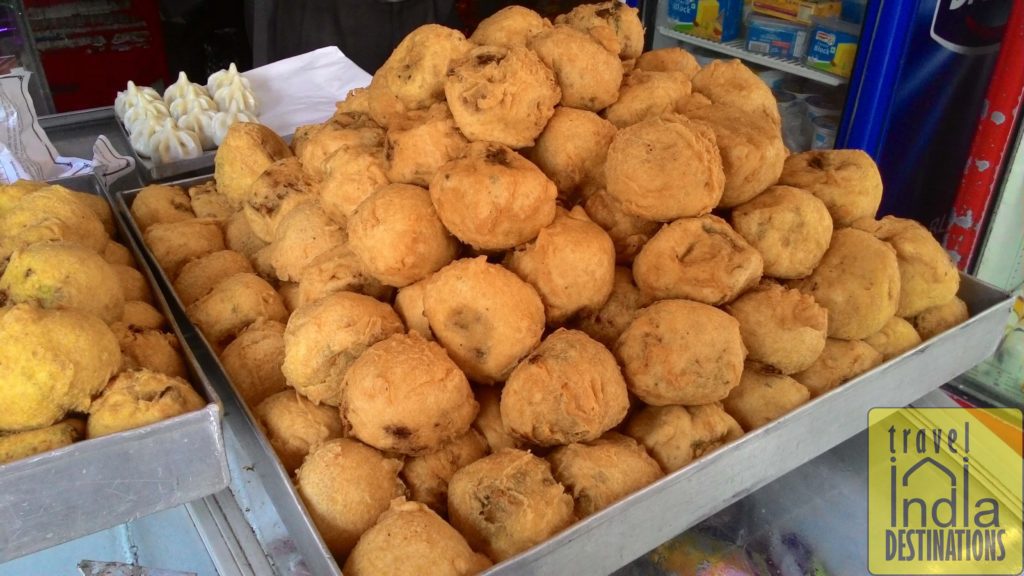
Mumbai’s On-the-Go Food: Vada Pav (Potato Fritters)
Like I mentioned earlier, Mumbai is all about options. You need to find how to survive in Mumbai within your budget. When it comes to food, Mumbai offers a huge platter of delicacies that you can eat. All you need is some research on how to find the best places to eat in Mumbai. You can find North Indian food, South Indian food and even Continental, Japanese, American fast food, and European cuisine.
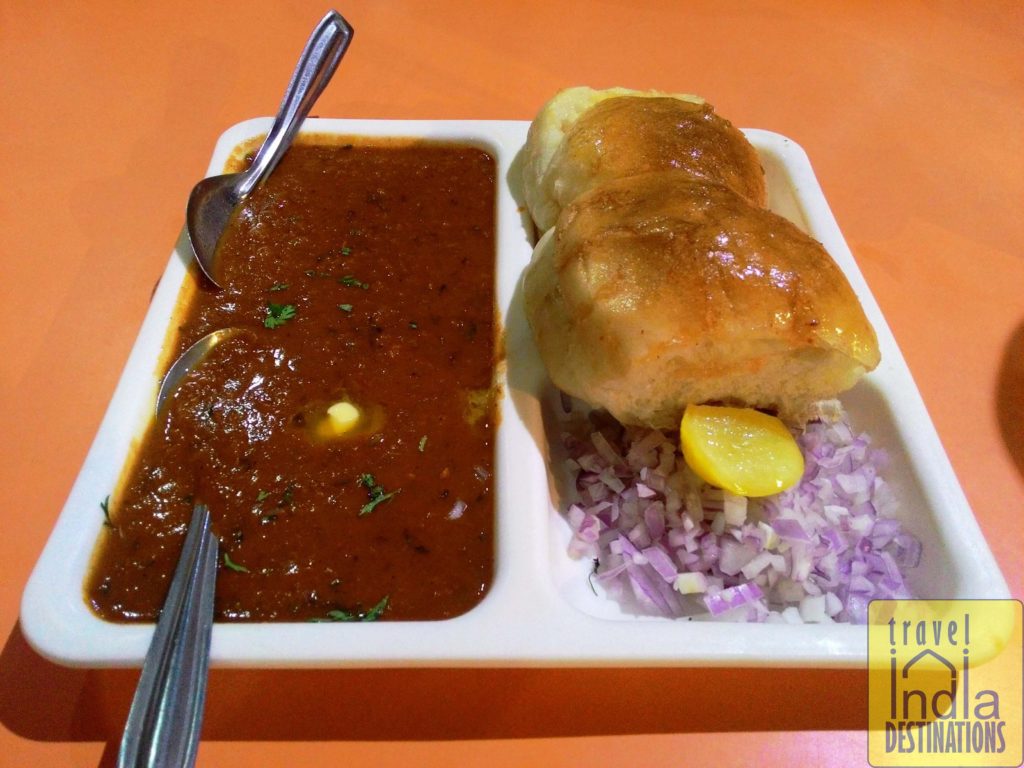
A Pav Bhaji offers a wholesome meal and costs only around a dollar.
Different restaurants here cater to a different class of customers so all you have to do is find a restaurant or café according to your budget. If you want to cut down your expenses try the street food, which might not be extremely hygienic, but I can say – You’ll Live.
Mumbaikers have been brought up on a healthy dose of street food.
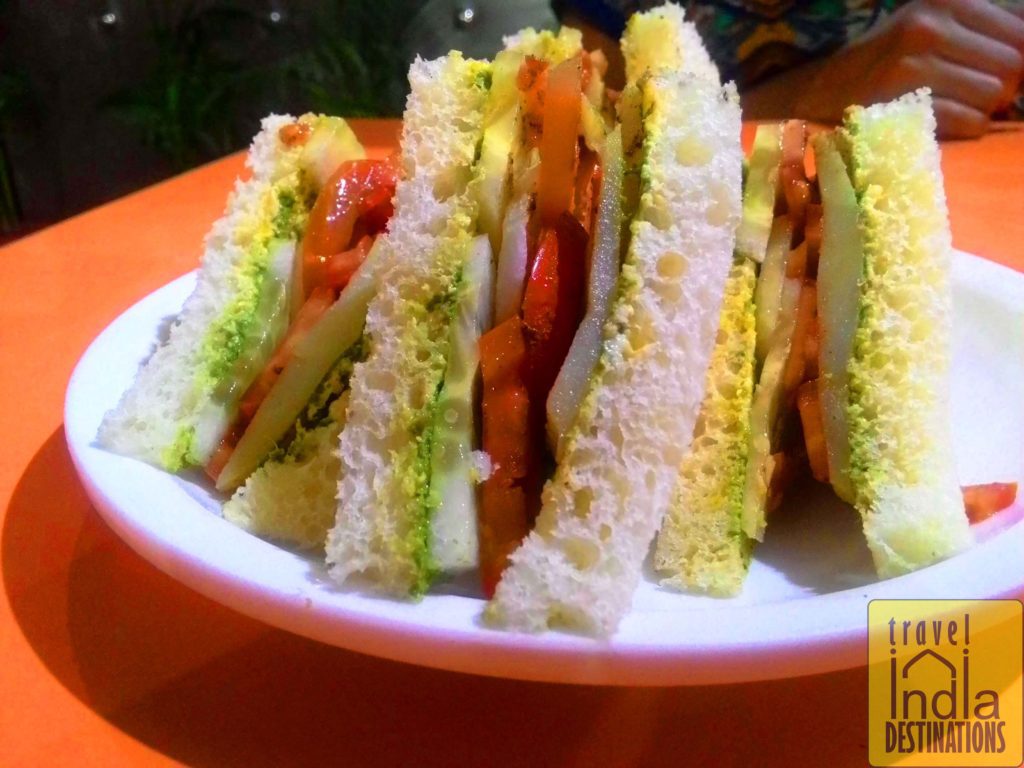
If you don’t like fast food, how about a bite of vegetable sandwich?
If you can afford more than a street food you’ll find decent restaurants where you can have a hearty wholesome meal at Rs. 300 (US$5). A-grade restaurants offer you a better class experience for which they charge you a bit higher rate. If you can afford luxury Mumbai has plenty of star-grade hotels and restaurants to provide you with a rich gastronomic experience. There are certain neighborhoods that cater to affluent class because of the demographics. Hence, it will be hard to find budget options in those areas. You will also find many places to eat in Mumbai after midnight.
Shop As Per Your Budget
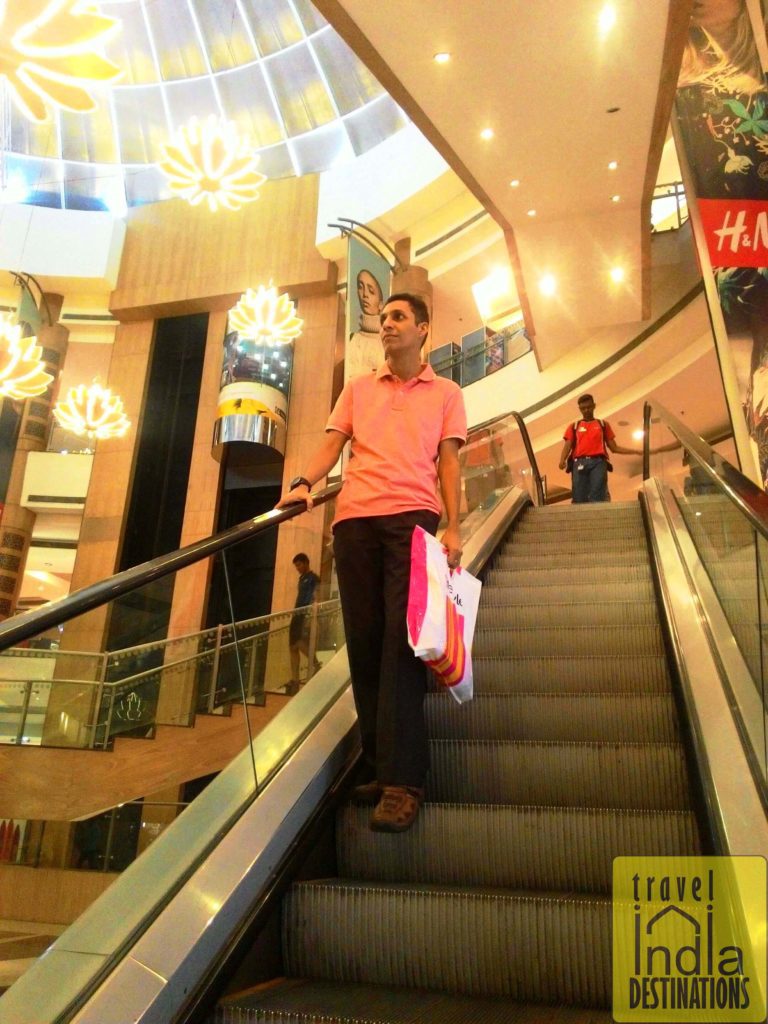
Shop as per your budget in Mumbai
Shopping in Mumbai is all about the choices you make. It is good to know how much you are willing to spend before you step out. If you prefer to shop on a budget you may choose to shop at places like Dadar, Andheri, Crawford Market, Borivali, Kurla, and Thane. If you choose to buy branded clothes you can pick from a wide list of shopping malls across the city.
A good bargaining skill is always handy to save extra money.
A Quality Time at Low Cost
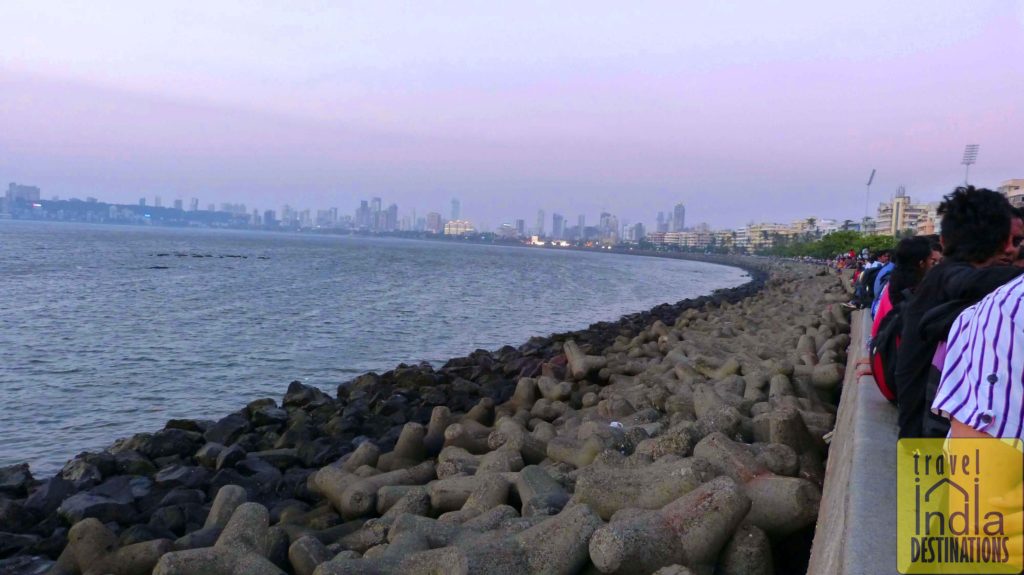
Spend quality time with your loved ones and friends at Marine Drive
You don’t have to spend lavishly to spend quality time in Mumbai with your loved ones and friends. If you want to spend a good time you can head to Marine Drive, Gateway of India, Kala Ghoda, Priyadarshini Park and many other such places where you don’t pay anything to get some fresh air and enjoy a great view. If you love watching movies you can head to single-screen theaters that charge you less than the new-age multiplexes. You can explore the museums and most parks in the city are for free. Enjoy your evening watching the people around. Visit some of the shopping malls and enjoy some window shopping as well.
Conclusion
Mumbai is a city of striking contrasts. A city where low-income migrants, mid-income working class, and millionaires all live side by side. Finding the right options is the key to how to survive in Mumbai city. Mumbai offers choices to everyone from local residents to international tourists. It is up to us to decide what we want and where we can find it at the right price.
6 comments
I am viewing on a laptop, and I see the photos. The captions seem to be a bit contrary, the photo either needs to be fully or mostly in view on the screen. My screen is small, and that wasn’t always possible. Sorry for starting with nitpicking, but I figured you would want to know.
I enjoyed the article. I’m curious about the trains. If I were there, as an English only speaking person, would I be able to figure out the map/schedules?
Thank you for your comment, Dan. Yes, even if you were in India you would be able to figure out the map and schedules. There are so many expatriates here in Mumbai and even tourists and international students here who move around casually. The only thing you would have to figure out is how to handle the crowd.
I see all the images…. computer here.
Curious — one of the reasons I never traveled to India was that so many friends — even though who traveled first class — came back sick from food or water — even bottled water. Now lots of people say the same about Mexico, but growing up near Mexico and going there as easily as I could go to any American city I never had a problem, as long as I stayed away from salads. So you mention that the stalls are not necessarily hygienic — how often do tourists get sick and is that al over India or just some areas?
I don’t think India is so bad. I am sorry to hear that many of your friends returned home ill, but I don’t buy that theory. I have interacted with many non-Indians living here in India and they eat the same junk food and street food that we do and they are perfectly healthy. Yes, stalls are not necessarily hygienic all over India, but they don’t make you fall sick all the time. Now, it would be hard for me to comment on how often tourists get sick because I don’t have any statistics on that. However, I think has got to do more with the spices in the food, the hot and humid weather and also the water quality as you mentioned. Also, this might seem weird but I think it could be a lot of ‘in the mind’ thing because you see the food being cooked in a unhygienic way and that sticks in your mind and then reacts accordingly. Recently, I met a Spanish couple Iris & Angel who were touring India and they were perfectly fine during and after their tour. I have blogged about them as well. https://travelindiadestinations.com/mumbai-travel-guide-tour/ In fact, they are planning to re-visit India in the future. My Microsoft trainer Trisha was from Maryland (MD) and she was married to an Indian and living in Mumbai. We have had many lunches and fast food snacks together.
Thanks for sharing this blog post! Very insightful.
You’re welcome, Jackson.